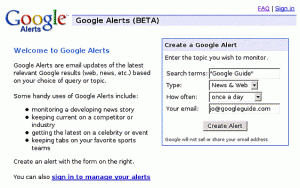
In the previous article, titled “Listening for your brand online“, I mentioned a few monitoring tools that you can use to listen for mentions of your brand or keywords. I will now go into a bit more detail about each of these tools.
If you only use one monitoring tool, Google Alerts is probably your best bet. It is very easy to set up and you can adjust what you are interested in as you go. I recommend you start with broader search terms and then narrow them down as you begin to see results come through. If you choose the email alerts option, you will receive an email for each term for which you have chosen to be alerted. Remember that you can always include alerts for your competition, so you can see where their brand is showing up too. If you are finding too many results, try to be more specific with the keywords you are searching against.
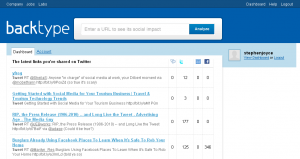
Backtype is a tool for monitoring blog comments from around the web. It also works by finding links that you have shared through Twitter and attributing them to you. You can see how many times the link has been shared and how many people are talking about you or your brand. When you first use it, you may not find any results. For a new company or a company just starting out with social media, this is not unusual. As you begin to engage more, you will find that your comments stream will increase.
![]()
Forums and discussion boards are still a very popular way for people to interact with each other. Popular travel forums like Lonely Planet’s Thorntree generate leads for travel companies the World over. Boardtracker searches forums for mentions on your brand or keyword (depending on what you search) and returns results. I did find that that many of the results from Boardtracker were already in the regular Google Search, so you may want to use Boardtracker as a supplementary search tool. By the way, if you are not already a member of the Lonely Planet Thorntree forum, I highly recommend you sign up and start contributing.
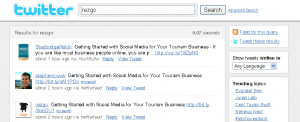
Twitter search is probably the best way to see how people are tweeting about your brand. The important thing to remember is that Twitter search can be accessed from a variety of tools, including the aforementioned Backtype and even Google Alerts. If you are using a Twitter client such as Tweetdeck or Seesmic Desktop, you can store your Twitter searches and refer back to them in real-time throughout the day. As you become more and more active online, you can expect to see your new content to show up in various streams in real-time. This article, for example, will most likely appear in Google’s index within about five or ten minutes of being published. (Hence the increasing importance of editing!)
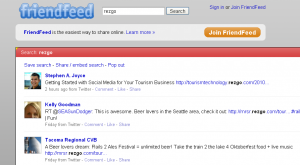
Think of FriendFeed as a funnel for your social interactions. Friendfeed can combine your various social streams into one aggregated stream so it makes it easier to see what is happen across all your social channels. For example, you can combine your Facebook updates, Twitter searches, Google Buzz, and other feeds together and watch conversations that you are having across all of them. If this is too much to digest, you can limit to the ones that you want and add and remove streams as required.
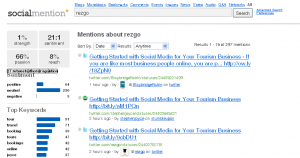
Social Mention is the one tool out of the group that truly combines feeds with measurement. You can see at a glance, the keywords, tags, and streams that make up your social presence online. The dashboard view of each search term gives you the most recent live search results and then shows you:
- Sentiment – Whether the mentions are postive, negative, or neutral
- Top Keywords
- Top Users
- Top hashtags
- Top Sources (which sites or services the mentions were pulled from)
In summary, there are many different ways to find out what is happening online. If you can only handle the basics, I recommend that you start with Google Alerts and then add Social Mention to refine the social content. Once you have the basics down, you can consider using a more in-depth paid social monitoring service.
Search The Blog
Categories
Most Popular Articles
- Set-jetting, Forest Bathing, and Hush Trips: 20 Innovative Tourism Business Ideas and Trends for 2023
- Advantages and Disadvantages of Online Travel Agencies (OTAs)
- Your Marketing Mix: the 7 Ps of Travel and Tourism Marketing
- How to Create and Promote Amazing Tour Packages
- How to Create a Business Plan for Your Tour or Travel Company


